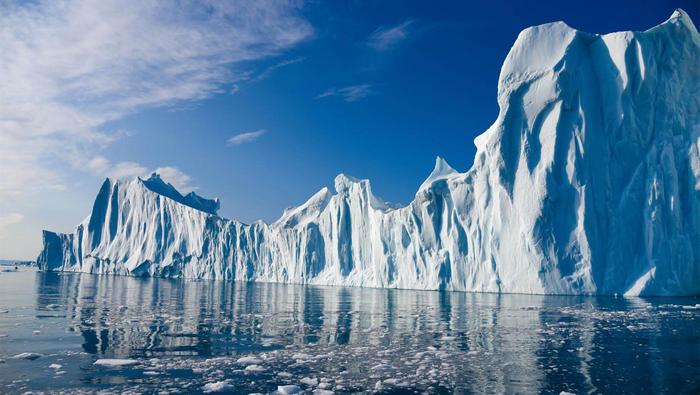Over the last four decades, warming climate and ocean temperatures have rapidly altered the Greenland Ice Sheet, creating concern for marine ecosystems and weather patterns worldwide. The environment has challenged scientists in their attempts to measure how water moves around and melts the ice sheet because equipment can be destroyed by icebergs floating near the glaciers.

Credit: Mark Carey
Over the last four decades, warming climate and ocean temperatures have rapidly altered the Greenland Ice Sheet, creating concern for marine ecosystems and weather patterns worldwide. The environment has challenged scientists in their attempts to measure how water moves around and melts the ice sheet because equipment can be destroyed by icebergs floating near the glaciers.
Collected using a novel approach, research from the University of Maine has unearthed new information to help scientists better understand circulation patterns of ocean water around glaciers. A group of pioneers in glacial research attached GPS devices to icebergs and used their mobility to understand fjord circulation, which can ultimately enhance the accuracy of climate models.
In the summers of 2014 and 2019, the GPS devices tracked hourly changes in the position of 13 icebergs as they passed through Greenland’s Ilulissat Icefjord toward the ocean. Starting as research during her time at the University of Oregon, UMaine assistant professor of geomatics Kristin Schild collected the fjord data with a colleague from UO, earth sciences professor and oceanographer David Sutherland. In 2020, an undergraduate student, Sydney Baratta, used these datasets as the focus of her senior capstone project. Continuing the research into her graduate studies, Baratta processed and analyzed her findings and recently published the results in the Journal of Geophysical Research: Oceans.
Study results showed circulation in the primary fjord is greatly affected by freshwater flow from connecting tributary fjords, which is critically important to consider in circulation models. Such models can range from studying ocean currents to predicting the speed at which sea level could rise.
“Being able to utilize the many icebergs that are in this fjord is really unique to the study,” said Baratta.
Ilulissat Icefjord is home to Sermeq Kujalleq, one of the fastest and most active glaciers in the world. This makes the fjord a good, but challenging location to understand glaciers’ interaction with the ocean and predict how the icy giants respond to ocean warming.
“Think about ice cubes in a glass of water. They float,” said Baratta. “But if it’s in a fjord, under the influence of other forces like wind and the currents, the icebergs move around. What we wanted to do was put GPS trackers on those icebergs to infer what the circulation in the fjord is and see how that is influenced by the environment.”
Carlos Moffat, who researches glacier-ocean interactions and polar oceanography at the University of Delaware, said equipment stationed in fjords is commonly crushed by all the movement. How Schild collected these datasets, he said, was innovative. Instead of viewing the icebergs as an obstacle, she used them as a tool to carry and protect the equipment.
“It’s a situation where the thing you’re interested in is destroying your gear,” said Moffat. “So what they’ve done in this study is basically flip the script.”
Impact beyond the Arctic
Greenland, where Ilulissat Icefjord is located, and Antarctica have the largest fresh water reservoirs of ice in the world. How quickly the ice sheets melt contribute to sea level rise worldwide. In Greenland and Antarctica, glaciers “dip their toes” in ocean water, Moffat said, which can allow ocean warming to accelerate how quickly the ice melts or breaks into icebergs.
Lauren Ross, UMaine associate professor of hydraulics and water resources engineering, said Baratta, Schild and Sutherland’s findings will be useful for a range of research relating to fjord circulation, including her area of expertise — the transport of material in water.
She recently studied how freshwater flowing into a fjord negatively impacted the growth of a harmful microscopic algae. Unlike in Greenland, more freshwater helped the economy and ecosystems surrounding the fjord.
“In order to be as accurate as possible, we have to have the most accurate data to feed into the models,” said Ross. “I think it’s going to become more and more important as the climate warms.”
Similar to Ross’ reflection, Schild said recognizing that changes are happening in the environment is the starting point. Scientists are now working to fill gaps in research to represent the changing environment and create better predictive models.
“Glaciers have reshaped global climate and ecosystems for millions of years,” said UMaine President Joan Ferrini-Mundy. “Novel research from our world-renowned climate scientists provides more insight into how they interact with their surrounding environments and plays a vital role in predicting our climate future.”
Data processing and analysis was supported by grants from the U.S. National Science Foundation (NSF) and NASA’s Early Career Investigator Program, which focuses on the use of space-based remote sensing and model integration to benefit humanity.
While the ever-altering Greenland Ice Sheet has dramatic local impact, it is the top of a slippery slope slanted toward changes worldwide. What happens in the frozen fjords 2,000 miles to the north of Maine affects New England’s seafood cuisine and has a role in the increasingly devastating storms along the coast.
“Everything is interconnected,” said Baratta. “Changes happening in the Arctic can have trickle-down effects that impact what we see in Maine.”
Journal
Journal of Geophysical Research Oceans
DOI
10.1029/2023JC020117
Article Title
Ilulissat Icefjord Upper-Layer Circulation Patterns Revealed Through GPS-Tracked Icebergs




